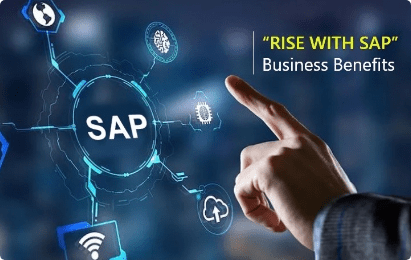
Blog
Orane’s blog posts keeping you up to speed with what’s hot in the world of business.
The Many Complexities of integrating SAP system with Non SAP system

Introduction:
SAP ERP is a formidable business tool for enabling seamless productivity and efficiency at any modern enterprise. From establishing a centralised backbone to support different business functions to enabling seamless business portability across locations, SAP ERP has become a flag bearer of digital transformation in businesses across industries.
When an organisation decides to transition their business into SAP ERP to better manage their resources, they are taking a decision equivalent to brain surgery in their organisation. The ERP will be at the pivotal point of decision-making, but it needs to be seamlessly integrated with all enterprise applications to facilitate comprehensive management of a business’s operations and assets.
Today, a business may have multiple enterprise applications being deployed across its technology landscape that serve the needs of different departments. Some examples could be CRM, Marketing Automation tools, HCM, and Finance Management tools. When SAP ERP is brought into the picture, there is a need for all of these enterprise applications to seamlessly work together with the ERP at the core, and only then would the organisation be able to realise the full value of their SAP investments.
But integrating SAP with non-SAP systems is not easy and comes with a number of complex challenges. Let us explore the top three:
SAP’s Technology Compatibility
From time immemorial, SAP has stood out from the rest of software makers in creating their own standards and programming conventions for developing their enterprise software. Moving away from industry standards in coding and programming basics, SAP uses its own technology stack to build software with the likes of ABAP, SAP BAPI, and so on. While these have proven to be highly effective in making the ERP function seamlessly in organisations, the scene with integrations to non-SAP systems has been disappointing. With the ABAP code base finding little or no use outside the SAP ecosystem, businesses find it nearly impossible without plug-ins or connectors to make SAP ERP work together with non-SAP applications. This limits the ability of an organisation to achieve a seamless experience by unifying their technology ecosystem and ultimately hurts their own innovation abilities. Businesses may find themselves locked or constrained in leveraging the full capabilities of innovative enterprise applications built by other vendors. This arises due to their inability to interoperate with SAP ERP owing to differences in the code base and underlying technology architecture.
Larger Scope of Customization
The key behind SAP ERP’s success in becoming a landmark tool for business operations is the ability of the platform to be configured and customised to suit the unique needs of any business. But this advantage can turn out to be an Achilles heel when non-SAP business systems come into the picture and need to be integrated with the SAP ERP. As a business scales up and crosses geographical boundaries, the underlying SAP ERP can easily help transition into a new configuration to support operational and standard compliance requirements of new markets. But when a non-SAP business system needs to be integrated into the business to support their growth ambitions, the integration process needs to cover two or multiple SAP ERP configurations with varying levels of customisation. This will increase the timeline of the integration process and subsequently push costs up due to the massive effort and manpower required in carrying out the integration exercise. Such a widespread integration landscape requires a strategic plan which needs to take into account requirements from multiple regions or geographies and ensure fail proof business operations once the integration is over.
Extensive Delivery Complexities
As mentioned earlier, SAP operates with its own standards and best practices, and its integration mechanisms operate with a number of methods such as IDocs and BAPIs. Add to this, the extensive reach of SAP systems within an enterprise, the areas of impact that need to be covered during the implementation stage itself are so large that SAP projects typically take months or years for an extensive roll out. This cycle of prolonged delivery applies to the integration scenario as well. There is a need for specialised skill sets needed to manage the interoperability of non-SAP systems with SAP because different departments or functions within the organisation require prioritizations and customisation. All these things complicate the journey to completing the integration. With SAP becoming a centralised repository or record of an organisation’s most critical operational data, integrations need to be carried out with extra caution to ensure that there are no security vulnerabilities left exposed after integration. Any unauthorised access through an interface where a non-SAP business system accesses data from SAP can result in the entire business’s credibility getting jeopardised.
There is no doubt that SAP ERP will be one of the most vital tools that a modern business can rely on to improve its operational efficiency. But in the digital era, it is equally important for businesses to ensure that their technology landscape comprises applications that can work together to produce the most desired results for every KPI that the business sets as a goal for achievement. This will be possible only if the business has a seamless road map prepared and ready for integrating SAP with non-SAP business systems.
Subscribe to our communication
You agree to receive newsletters, marketing communication and latest developments from us.

6 Tips to Boost Your Business Performance
- August 19, 2022

How ERP Implementation is Essential for Businesses? – Top 5 Reasons
- August 19, 2022

Take your Data into next level
- August 19, 2022

Rise with SAP: Business Benefits
- August 19, 2022

SAP Masterdata Management
- August 19, 2022

